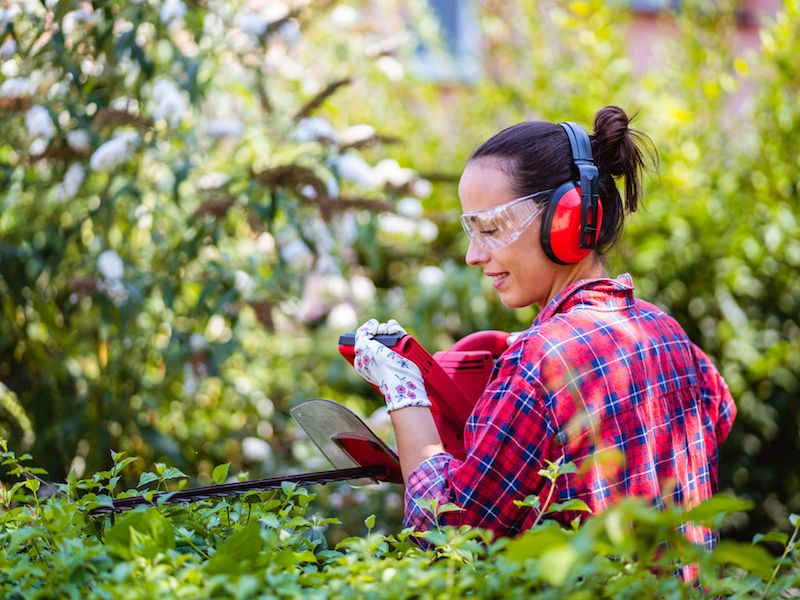
Eating right and protecting your hearing have some similarities. It’s difficult to know where to begin even though it sounds like a good idea. This is particularly true if you don’t think your daily environment is particularly noisy and there aren’t any obvious risks to your ears. But your ears and senses can be stressed by daily living, so your auditory acuity can be preserved if you practice these tips.
If you want to keep enjoying the sounds around you, you need to do everything you can to slow down the degeneration of your hearing.
Tip 1: Wearable Ear Protection
Using hearing protection is the most practical and simple way to safeguard your hearing. This means that diminishing loud and damaging sound is a basic step you should take.
For many people, this will mean utilizing ear protection when it’s warranted. Two basic forms of protection are available:
- Ear Plugs, which are placed in the ear canal.
- Ear Muffs, which are put over the ears.
Neither form of hearing protection is inherently better than the other. Each type has its benefits. What’s important is that you get some hearing protection that you feel comfortable with.
Tip 2: When Sound Gets Harmful, be Aware of It
But how do you know when to use hearing protection? We’re used to linking harmful noise with painful noise. But much lower levels of sound can injure your ears than you might realize. The sounds of traffic, as an example, are loud enough to start injuring your hearing after only a couple of hours. An important step in protecting your hearing, then, is knowing when sound becomes dangerous.
Generally sounds become harmful at the following thresholds:
- Over 100 dB: Your hearing can be very rapidly damaged by this. Anything over this limit can damage your hearing in minutes or seconds. Jet engines and rock concerts, for example, can injure your ears in about thirty seconds.
- 85 decibels (dB): This level of sound is hazardous after around two hours of exposure. This is the volume of sound you’d expect from a busy city street or your hairdryer.
- 95-100 dB: This is the normal level of your earbuds or the level of farm equipment. This level of sound becomes harmful after 15-20 minutes.
Tip 3: Make Your Phone Into a Sound Meter
Now that we have a general understanding of what levels of noise might be dangerous, we can take some precautions to make sure we minimize our exposure. But in everyday life, it can be difficult trying to measure what is too loud and what isn’t.
Your smartphone can now be used as a handy little tool. There are dozens of apps for iPhone, Android, and everything in between that turn your device’s microphone into a sound meter.
In order to get an understanding of what hazardous levels of noise really sound like, use your sound meter to check the decibel level of everything you are hearing.
Tip 4: Keep Track of Your Volume Buttons
A smartphone with earbuds is normally the way people listen to music these days. Your hearing is put in danger with this combination. Your ears can be considerably harmed if you keep your earbuds too loud over a long period of time.
That’s why protecting your ears means keeping a sharp eye on your volume control. You should not increase the volume to drown out sounds somewhere else. And we recommend using apps or configurations to ensure that your volume never unintentionally become dangerously high.
Earbud use can become a negative feedback loop if your hearing begins to decline; you could find yourself constantly raising the volume of your earbuds so that you can make up for your declining hearing, and in the process doing more harm to your hearing.
Tip 5: Get Your Hearing Tested
You might think of a hearing test as something you schedule when your hearing has already begun to decline. Without a baseline to compare results to, it’s not always easy to identify a problem in your ears.
Scheduling a hearing screening or exam is a great way to generate data that can be used for both treatment and analytic purposes, ensuring that all of your future hearing (and hearing protection) decisions have some added context and information.
Pay Attention to Your Hearing
In an ideal world, protecting your ears would be something you could do constantly without any difficulty. But there will always be obstacles. So whenever you can and as often as possible, safeguard your ears. Also, get regular hearing examinations. Hopefully, these guidelines will give you a good start.